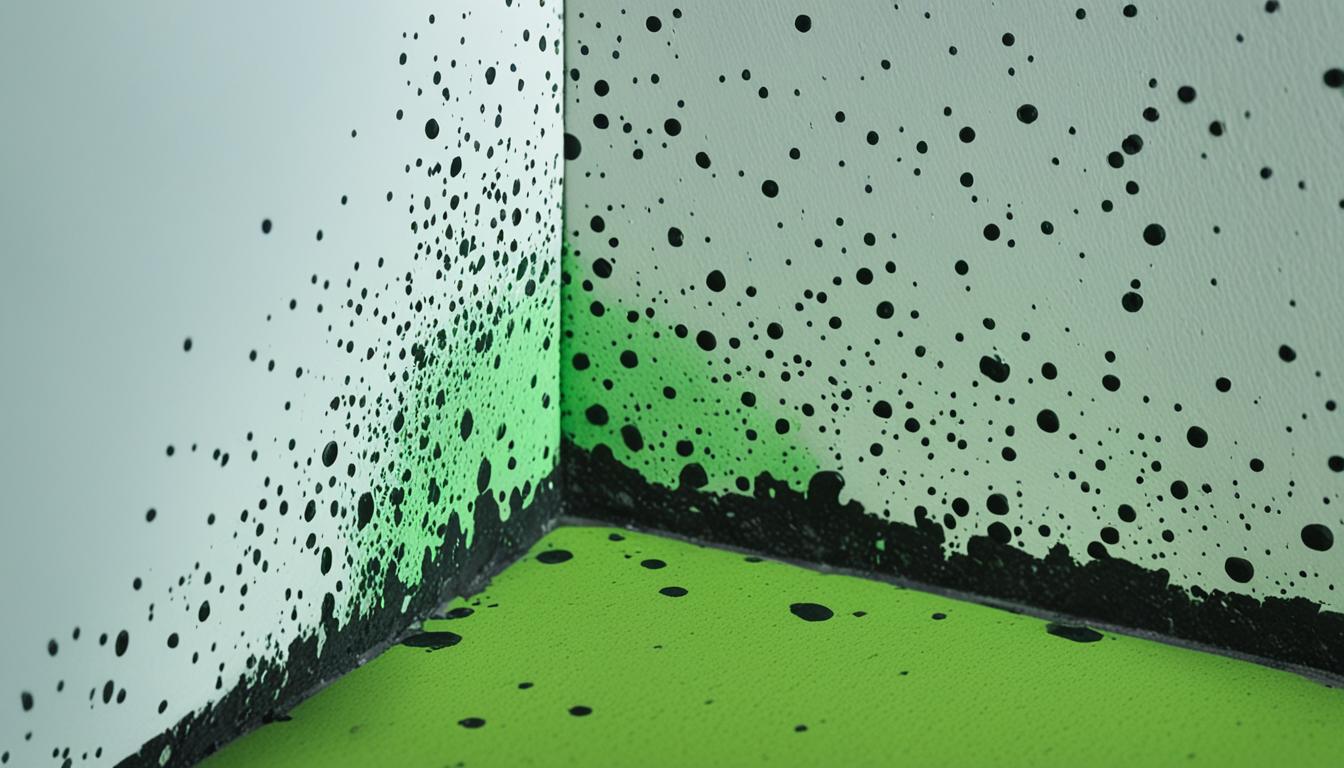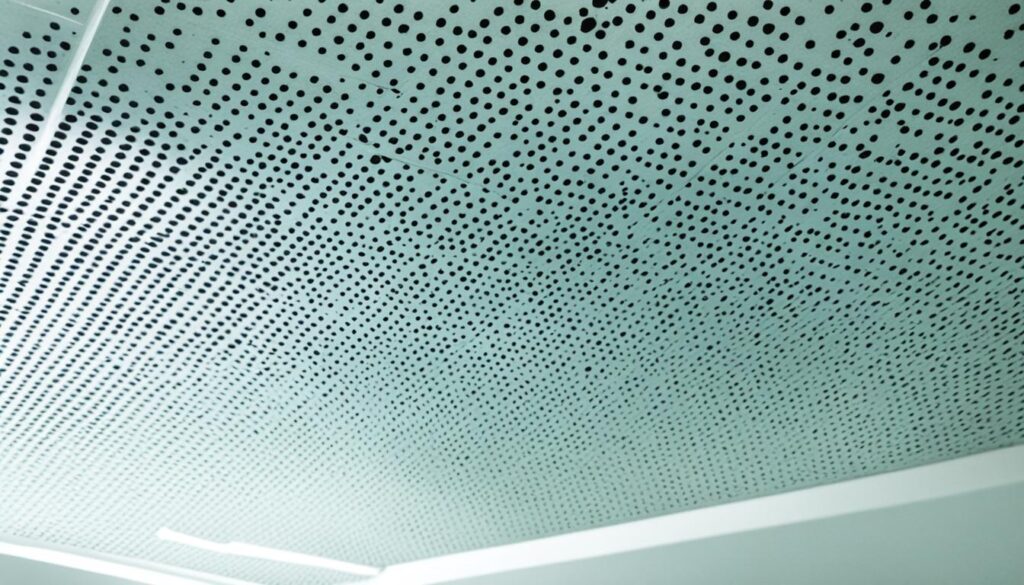
Is It Mold? How to Identify Mold in Your Home
Welcome to our comprehensive guide on identifying mold in your home. Mold can be a serious issue that affects both the structural integrity of your property and the health of its occupants. In this section, we will discuss the importance of mold identification, detection, and inspection. By understanding the visual cues and indicators of mold growth, you can take proactive measures to safeguard your home and well-being.
Key Takeaways:
- Mold identification is crucial for maintaining a safe and healthy living environment.
- Recognizing the appearance and characteristics of mold can help in early detection.
- Visual indicators, such as discoloration and musty odors, can indicate the presence of mold.
- Professional mold inspection and assessment are vital in evaluating the extent of mold growth.
- If you suspect mold in your home, contact Fix Mold Miami at 305-465-6653 for professional assistance.
Understanding Mold Appearance and Characteristics
In this section, we will delve into the appearance and characteristics of mold. By understanding the various colors, textures, patterns, and distinct musty odor associated with mold, you can quickly identify its presence in your home.
Colors of Mold
Mold comes in a range of colors, depending on the species and its growth stage. These colors can include:
- Black mold: A common type of mold that appears black or dark green.
- Green mold: Often found on damp surfaces, it can range from light green to dark green.
- White or gray mold: This type of mold tends to grow on moist areas, such as bathroom tiles or walls.
- Yellow mold: Typically found on walls, ceilings, or surfaces exposed to moisture and sunlight.
Textures and Patterns of Mold
Mold can exhibit various textures and patterns, depending on the environmental conditions and the type of surface it grows on. Some common textures and patterns include:
- Fuzzy mold: This type of mold has a velvety or fuzzy texture, similar to a soft carpet.
- Streaky mold: Mold that appears in streaks or lines on a surface, like wet paint drips.
- Spotty mold: Mold that forms in circular or irregular spots on surfaces.
- Slime mold: Mold that appears moist, slimy, and slightly translucent.
Distinct Musty Odor
In addition to its visible appearance, mold is often accompanied by a distinct musty odor. This odor is caused by microbial volatile organic compounds (MVOCs) released by mold during its growth and reproduction. If you notice an unusual smell in your home, it could be an indicator of mold presence.
To help you visualize the appearance and characteristics of mold, here is an image:
By being familiar with the various colors, textures, patterns, and musty odor associated with mold, you can better identify and address any mold issues in your home.
Mold Recognition and Visual Indicators
Recognizing mold in your home is essential for maintaining a healthy living environment. By understanding the visual indicators and being aware of common areas where mold thrives, you can take prompt action to address any potential mold issues.
Mold can appear in various areas of your home, especially in damp and humid environments. Some common places to watch out for mold growth include:
- Damp basements
- Bathrooms with poor ventilation
- Areas with water damage, such as leaky pipes or roofs
Being able to identify mold visually is crucial. Mold can come in different colors, textures, and patterns. It can range from black, green, or even pink. Mold can appear as fuzzy patches or small clusters, and it may emit a distinct musty odor.
Here are some visual indicators that can help you recognize mold:
- Visible patches or discoloration on walls, ceilings, or floors
- Peeling or bubbling paint or wallpaper
- Presence of dark spots or stains
- Musty or earthy odor
It’s important to note that not all molds are easily visible. Mold can also grow behind walls, under carpets, or in hidden corners. If you suspect mold but cannot see it, it’s advisable to seek professional help for a thorough inspection.
Mold can thrive in areas with high moisture levels, which is why it’s crucial to address any water leaks, excessive humidity, or dampness in your home. Taking preventive measures and promptly addressing any mold growth can help maintain a healthy living environment.
Common Visual Indicators of Mold
| Visual Indicators | Description |
|---|---|
| Discoloration | Visible patches or spots of different colors on surfaces |
| Texture | Fuzzy, slimy, or velvety appearance |
| Odor | Distinct musty or earthy smell |
| Peeling or bubbling | Paint, wallpaper, or other materials showing signs of damage |

The Importance of Mold Inspection and Assessment
In order to effectively address mold growth in your home, it is crucial to prioritize mold inspection and assessment. A professional mold assessment plays a vital role in identifying and evaluating the extent of mold infestation. By obtaining a thorough assessment, you can make informed decisions about mold remediation and prevention, ensuring the safety and well-being of your household.
Why is Mold Inspection Important?
Mold inspection goes beyond simply visual detection. While some mold growth may be visible, there are instances where mold can thrive in hidden areas, such as behind walls or beneath flooring. Professional mold inspectors have the knowledge, experience, and tools to detect hidden mold, ensuring a comprehensive assessment of your home.
During a mold inspection, experts will thoroughly examine your property, identifying areas of moisture and high humidity that contribute to mold growth. They will also assess any visible signs of mold, collecting samples for further analysis if necessary.
Regular mold inspections are essential for early detection, which allows for prompt action and reduces the risk of mold-related health issues.
The Role of Mold Assessment
Mold assessment involves analyzing the collected samples to determine the type and concentration of mold present in your home. This assessment provides valuable insights into the potential health risks associated with the specific mold species identified.
By understanding the extent of mold growth and the potential health effects, you can develop an effective remediation plan. Mold assessment enables you to prioritize areas that require immediate attention and formulate strategies to prevent future mold outbreaks.
The Benefits of Professional Mold Assessment
While DIY mold testing kits are available, they often lack accuracy and may not provide a comprehensive assessment of your home. Professional mold assessments offer several benefits:
- Accurate identification of mold species
- Thorough examination of hidden mold growth
- Assessment of health risks associated with mold exposure
- Expert recommendations for mold remediation and prevention
By relying on the expertise of certified mold assessors, you can ensure a reliable and trustworthy evaluation of your home’s mold situation.
| Benefits of Professional Mold Assessment | DIY Mold Testing Kits |
|---|---|
| Accurate identification of mold species | Limited accuracy and potential for misidentification |
| Thorough examination of hidden mold growth | No insight into hidden mold growth |
| Assessment of health risks associated with mold exposure | No evaluation of potential health risks |
| Expert recommendations for mold remediation and prevention | No professional guidance or tailored recommendations |
As the table above demonstrates, professional mold assessment surpasses DIY testing kits in terms of accuracy, insight, and tailored recommendations.

By investing in mold inspection and assessment, you can effectively address mold growth, protect the health of your family, and maintain a safe living environment. Don’t wait until mold becomes a significant problem—take proactive measures to identify and assess mold in your home today.
Conclusion
In conclusion, identifying mold in your home is crucial for maintaining a safe and healthy living environment. Mold can have detrimental effects on both your health and the structural integrity of your property. By familiarizing yourself with the appearance and characteristics of mold, you can be better equipped to recognize potential mold growth in your home.
Mold can come in various colors, such as black, green, or white. It often has a fuzzy or slimy texture and may appear as patches or spots on walls, ceilings, or other surfaces. Additionally, mold emits a distinct musty odor that can be a strong indicator of its presence. If you notice any of these visual or olfactory signs, it’s important to take action promptly.
If you suspect that you have mold in your home, it is essential to seek professional mold inspection and assessment. Experienced mold inspectors, like the experts at Fix Mold Miami, can accurately identify the presence of mold, evaluate its extent, and recommend appropriate remediation measures. Contact Fix Mold Miami at 305-465-6653 for a comprehensive mold assessment to ensure the safety of your home and the well-being of your family.




